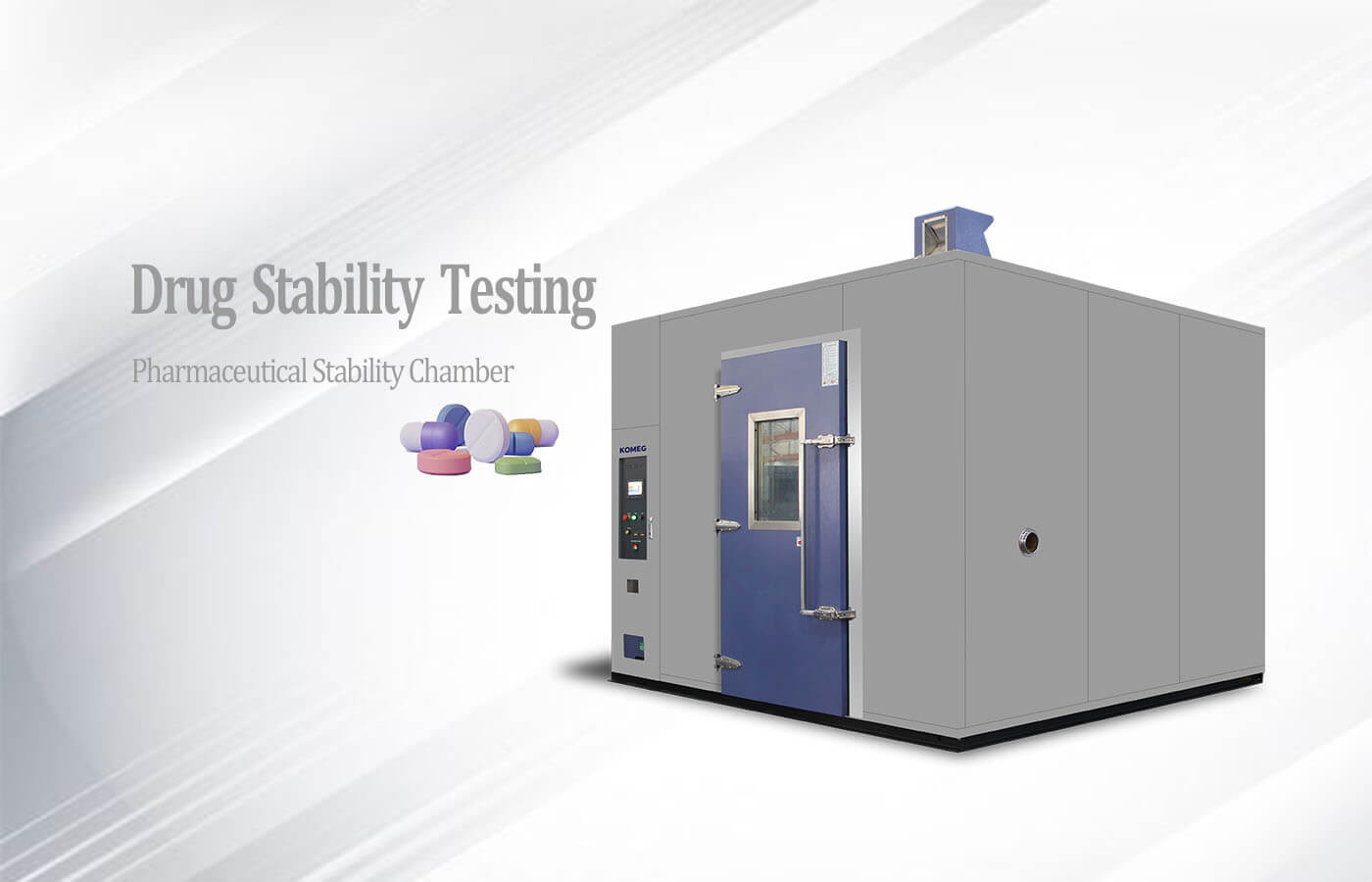Drug stability test is an essential part of the drug production stage, and a pharmaceutical stability chamber is key to completing this test. In this blog, we will introduce drug stability testing and pharmaceutical stability chambers.
Drug Stability Testing
Drug stability refers to the ability of a drug to retain its efficacy under various environmental conditions.
Drug stability testing involves subjecting drugs to different temperatures, humidity levels, and light conditions to observe any changes that may occur. This testing is conducted to determine the conditions under which drugs remain stable and to provide guidelines for drug development, production, packaging, storage, and transportation. Drug stability testing is an integral part of the entire drug manufacturing process and ensures the safety and effectiveness of drugs.
Drug stability testing mainly includes factor testing(specific tests), accelerated testing, and long-term testing:
Factor testing includes high-temperature testing, high-humidity testing, strong light exposure testing, repeated freeze-thaw testing, low-temperature testing, oxidation testing, acid-base testing, and more. Through these tests, the sensitivity of drugs to extreme conditions can be understood, and changes in drug appearance, content, and related quality indicators can be observed. This helps to preliminarily determine the conditions for drug packaging, storage, and accelerated testing and also provides a basis for drug formulation, processing, and testing methods.
Accelerated testing is conducted at temperatures and humidity levels higher than the storage conditions to accelerate the drug’s reactions and assess its stability. By increasing the temperature and humidity, the drug’s stability can be evaluated more rapidly. Accelerated testing helps to provide an initial determination of the drug’s storage period and serves as a reference for long-term testing.
Long-term testing is performed under conditions that closely resemble the actual storage conditions of the drug. It aims to validate the results obtained from factor testing and accelerated testing and ultimately determine the drug’s expiration date or shelf life. Long-term testing provides a comprehensive assessment of the drug’s stability under normal storage conditions over an extended period.
Pharmaceutical Stability Chamber
A pharmaceutical stability chamber can simulate the temperature, humidity, and light conditions required for drug stability testing and is suitable for pharmaceutical companies, drug R&D institutions, and quality control departments.
The demand for drug stability testing chambers can vary based on factors such as the drug’s properties, packaging, method of use, target market, transportation methods, and research stage. So, how do you choose a pharmaceutical stability chamber?
● Determine the properties and types of drugs.
● Determine the purpose of the pharmaceutical stability chamber according to the purpose and stage of the test.
● Determine the required test conditions: temperature range, humidity range, lighting function.
● Confirm the required pharmaceutical stability chamber size based on the sample size and installation location.
● Determine the required accessories.
● In case of a limited budget, you can consider choosing based on the manufacturer’s recommendations.
Generally speaking, if you are conducting small batches of pharmaceutical research in the short term, choosing a small-sized desktop or reach-in pharmaceutical stability chamber would be sufficient. However, in the long run, especially for pharmaceutical companies, the number and types of drugs being tested will increase with the development of the company. In such cases, choosing a walk-in pharmaceutical stability chamber would better meet their testing needs. A majority of our customers also purchase walk-in drug stability testing chambers.
Summary
Drug stability testing covers various stages of a drug’s journey from production to market. By using pharmaceutical stability chambers, the pharmaceutical industry can better control the quality of drugs and ensure the provision of safe and effective drugs to all users.

